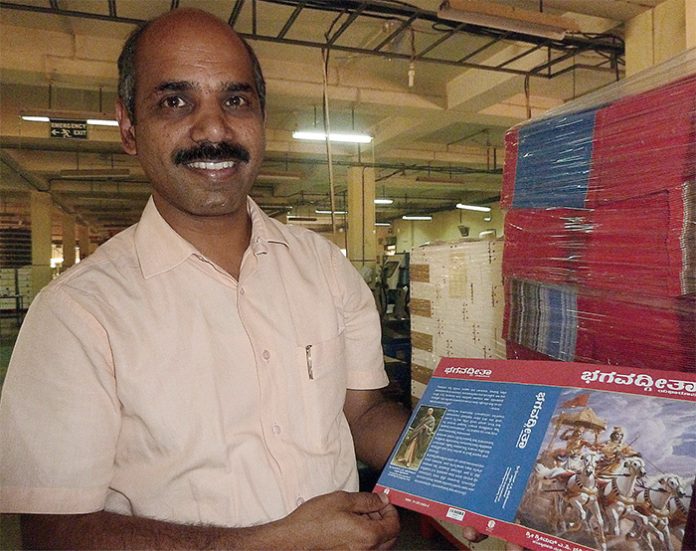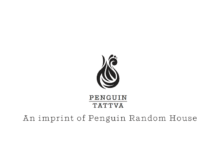It started 45 years ago, with one machine, one operator and a 100 square-feet area. “Today we’ve grown to some 300 people,” says Peter Anil Rego, looking back with justifiable pride. That is the story of Brilliant Printers, today on the outskirts of Bengaluru, some 30 kilometres out of the centre of the town.
Credit is given by all to the father of three brothers at the helm today. Anthony Victor (AV) Rego was driven by poverty from his hometown of Mangalore, on the west coast of Karnataka (then Mysore) to Bengaluru, and literally took refuge on the footpaths. Single-handedly, AV Rego or AVR started Brilliant’s first press in 1970, at the busy Chickpet marketplace.
It consisted of a single, manual treadle press, with AVR himself as the only employee. But he built up his press, which has grown into a sprawling unit today managed by his sons – the twins Peter Anil Rego and Paul Sunil Rego, and their younger sibling Thomas Manil Rego. “It was our dad who laid the strong foundation. Those days were tough days. I won’t say it’s not tough now, but the foundation is there. . . ,” the managing Rego brother (Peter Anil) told us when we visited their plant. “From Chickpet, we moved to Mathikere (a residential quarter in Bengaluru) in 1980.
Then we moved to a 155,000 square-feet place in Lottegollahalli. Our office is still there. Two years ago, we shifted to this factory,” Rego explains, saying that it was a former BPL factory, lying unused for a few years till it was bought in an auction by friends of the family. “When we first came here, two-in-ones and oscilloscopes were all over the place,” he adds.
They hope to move to a new place soon, maybe zeroing-down on the location by March end. The planned location could be easier to reach from the city.
Mastered book printing
“Over the years, we’ve mastered the art of book printing. Every printer does printing, but many customers tell us that as soon as they see a book printed by us, they find out that there’s something different in that book,” says Rego confidently. Nigel Fernandes, at the helm of the Asian Trading Corporation, a major outlet for religious books in Bengaluru city, appreciates their printing work.
“They are one of the biggest names in printing Bibles in India,” says Fernandes. But that’s not all. At their plant, ISCON texts are being finalized. Rego points to colored school primers, “which under state government policy, are given free to all children up to Standard VII, including my children.
” Their daily production capacity is 150,000 books in diverse formats – hard-case, soft cover and saddle stitching. “To give an example, we recently did a hard-case diary for the LIC insurance corporation.
It was our largest print run for a single copy. In six weeks we printed 650,000 copies. It was a tender-based job with penalty provisions, and we did 110,000 copies a week,” says Rego. They point to their 8-color printing machines, and equipment to guild the edges of books, like Bibles.
“Initially we were caught up discussing, whether we could do it, whether we should do it. Now, we are aiming for books with a print-run of up to 1.5 million. Our confidence lever is much higher, and we feel stronger,” says Rego. Their largest single job was the Gideon’s pocket New Testament, having printed about 2 million of these.
“If we were only doing one job, it should be over in a month just to complete it,” says Rego. (The Gideons International is an ‘association of Christian business and professional men and their wives,’ which work to make the Bible freely accessible. They are known for sharing the Bible in hotels, schools, colleges,
prisons, hospitals and medical offices. They have so far placed 1.8 billion scriptures and hope to touch 2 billion.)
Largest Bible printers
Today, Brilliant is known among the top Bible printers in India. “We might also be the biggest in terms of books done on thin paper (also called ‘Bible paper,’ a lightweight wood-free, uncoated offset paper). Sunil Rego adds, “We can go down to printing on paper as thin as 28 gsm.
Not everybody can print on this paper – it’s an art.” Anil Rego says, “That Bible is in Amharic (a Semitic language spoken in Ethiopia). We did another in Oromo, another Ethiopian language.
” On taking a count once, Brilliant found that they had printed books in as many as 140 to 150 languages, says Naveen Prakash Rodrigues, head of operations. The Regos believe that “many from overseas are looking” to deploying India as a print destination. But, they perceive an image problem, with the outside world largely still believing that India would not be capable to do a quality job.
“Finding the right people here can be tough. But our experience is that whoever comes to us does not leave us.
In the printing world, a lot is decided by word-of-mouth recommendations,” says Rego. The Konkani-language Bible (in the locally-used Kannada script) was printed by them, points out Rego, even as copies wait completion and despatch in the press. Would he agree that books are seen as lower-in-value, and perhaps the poor cousins of other printing jobs? “It also needs huge space.
A printer (who is not into books) with just a few 4-color machines and a small setup might have a larger turnover. We could venture into corrugated boxes or packaging, which is growing 10-15% per year, and is a good line to be in. Investment in packaging is one-time, compared to us needing to invest each time we go into a new line – saddle-stitch, soft cover, hard cover. But over the years, this turned into our speciality. We developed this art of printing books and working with thin paper, so it’s best to do what you are good at.
” Printed in India, proudly
Printing in India does offer advantages, specially when global quality can be maintained. For instance, a lectionary – in three volumes – that they printed for the Ignatian Press in the US, is being shipped both to the US and Africa.
“It is sold at US$300 a set, as many years of work has gone into developing it. It contains a wealth of information. The cost for our door delivery is US$24,” says Rego. Brilliant has exported books to some 70 countries, though only a few by the container-load. “Right now, in the next two months, some 6 to 7 seven containers are off to Ethiopia,” says Rego. He shows interest in the recent FICCI initiative to further promote Indian book exports to Africa. “We have advantages in quality, costs and English-language skills,” he says. A problem there is the corruption their exports sometimes encounter.
Looking for new sources
“We are looking to identify new sources. There are huge volumes there, sometimes supported by groups like the UNICEF or UN-funded projects.
So money is not an issue, but getting in touch with the right persons is crucial,” Rego adds. Dubai is also a sourcing hub for the Africans, and “we are trying to develop that market now.” How do they keep both larger and smaller clients happy? “We also take orders for books with print-runs of 1000 or 2000 copies of books.
We have two separate lines. We use the web-offset for high volumes. It’s not a question of big or small customers. Ultimately, each one is important if you can handle every customer in the same way.” says Rego.
They emphasize their commitment to quality, saying that paper and other inputs are carefully chosen. They use high-speed, mostly imported soya-based vegetable inks. Their website too swears by a ‘print green’ policy – recycled paper where possible, conservation of wastes, soya or vegetable-based inks “which, emit less volatile organic compounds than traditional inks that are made from petroleum, CFL bulbs” and imbibing energy-saving approaches in their employees.
“Sunil, Manil and we (the three brothers) are in the background now, and handing over to the team,” says Rego. But Rego worries about the spiralling of paper costs, and adds that sourcing the right paper has sometimes helped them. For instance, their use of imported 50 gsm hi-bulk instead of 80 gsm maplitho has offered an edge. Plus, you get an international feel to the book. It is lighter in the hand,” adds Rego. Sometimes, procuring paper and stocking it can be a challenge, he admits. Their endeavour is to treat their staff well.
Future of the book
How do they see the future? Chances of the book facing a downturn are there. But India hasn’t had a large book-reading population traditionally, so the potential for growth is also there, says Rego. In terms of exports, they do face some infrastructural problems at the ports, for instance. Like clogging, strikes, the monsoon disruptions. “We give an option to clients to shrink-wrap each book, and our packaging boxes are internally lined with a PVC film to protect from water seeping in,” says Rego. After-sales service, proper communication, and integrity in business dealings are what they focus on.
They also cherish their partnerships with book distributors, small publishers and others. “We aim to go beyond just treating people as customers. If a publisher can sell more books at a lower price, it’s going to be better for us,” says Rego, suggesting that’s what they want to achieve. “We need to keep innovating, touch international standards, and to build alliances to promote the printed word,” says Rego.


















